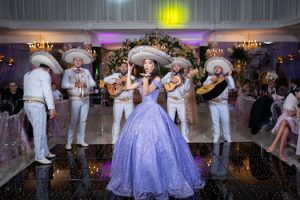Global Threads: How World Cultures Shape Modern Fashion
Fashion is not just about what we wear, but it is a reflection of our culture and identity. It is an art form that constantly evolves, influenced by various factors including historical events, societal norms, and global trends. One of the most significant influences on modern fashion is the diverse cultures around the world, each with its unique style and traditions. In this article, we will delve into the fascinating world of fashion and how it is shaped by different cultures.
The Globalization of Fashion
In the past, fashion was limited to a particular region or society, and designers predominantly drew inspiration from their own cultures. However, with the rise of globalization and the ease of travel and communication, fashion has become more globalized than ever before. Today, fashion trends spread rapidly from one corner of the world to another, and designers are drawing inspiration from a multitude of cultures to create unique and diverse styles.
The Influence of Asian Cultures
Asian cultures, particularly in countries like Japan, South Korea, and India, have had a significant impact on modern fashion. The intricate designs and vibrant colors of traditional Asian clothing have been reinterpreted in modern fashion, giving rise to a fusion of traditional and contemporary styles. Japanese streetwear, with its bold and experimental fashion statements, has also taken the world by storm, influencing Western fashion trends.
On the other hand, Asian cultures have also been continuously inspired by Western fashion, especially in countries like China. The popularity of luxury fashion brands and the rise of streetwear culture in Asia are clear indications of the cross-cultural exchange in the fashion industry.
The Allure of African Print
The vibrant and colorful prints of traditional African clothing have also captured the attention of fashion designers around the world. The use of African prints in modern fashion has become increasingly popular in recent years, creating a fusion of traditional and contemporary styles. Designers are incorporating these prints in their collections, showcasing their appreciation for African culture, and celebrating diversity within the fashion industry.
The Role of Traditional Clothing
Traditional clothing plays a significant role in shaping modern fashion trends. Many designers draw inspiration from traditional garments and incorporate them in their collections, infusing a unique and cultural touch to their designs. For instance, the popularity of the traditional Indian saree has led to the creation of modern, Westernized versions of this garment, making it a global fashion trend.
Preserving Cultural Identity
As modern fashion tends to homogenize, traditional clothing serves as a way to preserve cultural identity and heritage. People still take pride in wearing their traditional clothing, especially during cultural celebrations and festivals. In this way, fashion not only reflects a culture but also helps in its preservation and appreciation.
The Influence of Social Media
In today’s digital age, social media plays a crucial role in shaping fashion trends. With the click of a button, people can easily share and discover different cultures and their fashion styles. Social media influencers, from all over the world, showcase their unique and diverse styles, thereby influencing the fashion choices of their followers.
A Platform for Diversity
Social media has also provided a platform for underrepresented cultures and designers to showcase their styles and break into the global fashion industry. It has fueled the trend of cultural and inclusive fashion, promoting diversity and acceptance.
The Future of Fashion
In conclusion, the fashion industry has become a melting pot of different cultures, constantly evolving and adapting to new influences. With increasing globalization and the rise of technology, fashion will continue to be shaped by different cultures, creating a more diverse and inclusive industry. It is an exciting time where traditional and modern styles coexist, and the possibilities are endless.










